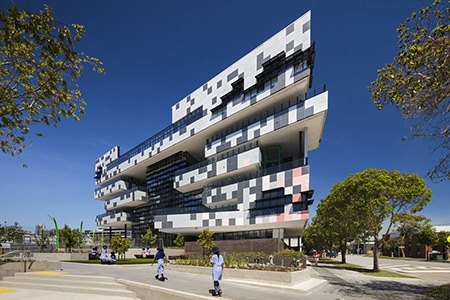
 With the popularity of vertical schools in Australia on the rise, Evaculife Managing Director Bruce Bromley said schools are now needing to address the additional risks related to fire safety in multi-story structures more than ever before.
With the popularity of vertical schools in Australia on the rise, Evaculife Managing Director Bruce Bromley said schools are now needing to address the additional risks related to fire safety in multi-story structures more than ever before.
The increase in vertical schools is a response to the growing demand for education in cities, with recent reports suggesting that Victoria will need an extra 220 schools by 2026.
The first vertical school in Australia opened in 1976, however Victoria now has a handful of inner-city schools, with one opening in South Melbourne earlier this year.
As an Accredited Disability Access Consultant and Fire Standards Australia Development committee member, Bruce said there are several ways that vertical schools differ from traditional single-storey schools in terms of fire danger.
“Vertical schools need to be prepared to cater to all students in an event of an emergency and to take special consideration of how individuals will safely navigate through the multi-story building.”
According to Bruce, he has not seen an evacuation plan to date that satisfactorily addresses the evacuation of students with disability, in either a state or private schools.
“When it comes to fire safety, there are certain groups and individuals with a higher risk of injury or death, including individuals with disabilities, chronic health conditions and younger children such as primary aged and early learning.
“It’s crucial that schools have safety procedures in place that are accommodating to these groups.”
The current early learning staff to student ratio set by the Victorian Government is one educator assigned to 11 children over the age of three and one educator assigned to four children under the age of three, which Bruce said makes a quick and safe evacuation near impossible.
“A student with a disability may not be able to evacuate down stairs, or react quickly to a danger such as fire, and teachers may not be trained to effectively assist a child with a disability down multiple stories,” he said.
Vertical schools are designed with elevators, which of course, should in most cases cannot be used in the event of a fire. The primary reason is due to a piston effect where a lift can either draw down smoke or push it to other areas of the building via the lift well, with smoke inhalation more likely to cause fatality than the fire itself.
One solution however is to install fire isolated lifts at a significant cost to the development. Internationally, there is a push for fire safe refuges to be incorporated into stairwells and the provision of Evacuation Chairs, something that should be pushed in Australia too.
Individuals who rely on elevators, including those with a permanent or temporary disability, adults who may be pregnant or are postoperative, are essentially trapped within the building and forced to wait until emergency services arrive on site.
Bruce said that several factors can affect response times in urban areas, most prominently, road congestion, particularly as Melbourne’s population continues to soar.
“At the end of the day, vertical schools are a positive contribution to urban areas, however vertical schools must remain vigilant in undertaking regular fire drills and having a comprehensive evacuation plan in place, as the result of a fire in a multi-storey building can be much more catastrophic than that of a single level school,” said Bruce.
Also, view our post Safe Emergency Evacuation of Schools

